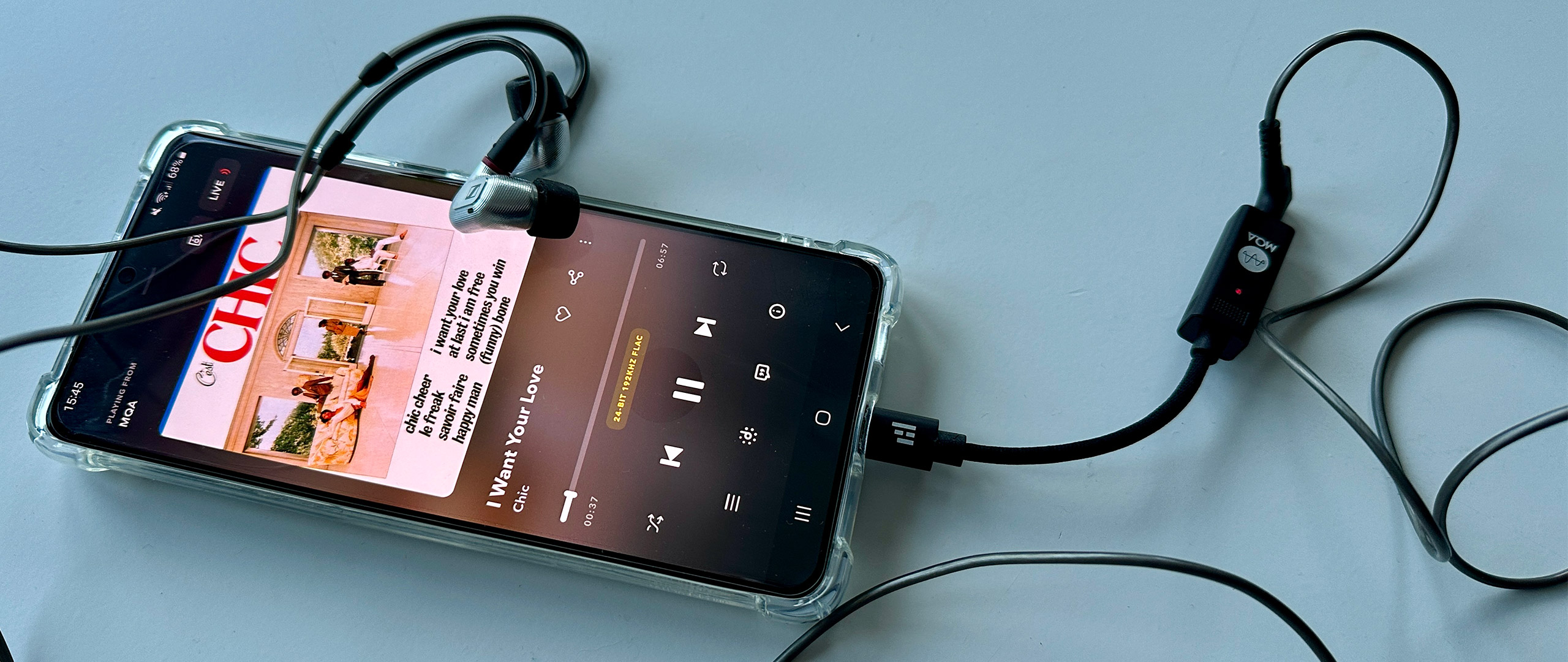TechRadar Verdict
An elegantly simple and effective way to extract proper sound quality from that otherwise terrible-sounding smartphone or laptop, and to fully exploit your top-tier streaming service subscription at the same time.
Pros
- +
Punchy and deft audio performance
- +
As portable as can be
- +
Properly made
Cons
- -
Minimal user interface
- -
Can get shouty at volume
Why you can trust TechRadar
Helm Audio Bolt: Two-minute review
The Helm Audio Bolt USB DAC/headphone amp is small, perfectly formed and elegant in its simplicity. It’s equipped to make the sound coming out of your laptop or smartphone far better than it otherwise would be, and it’s priced to make its talents available to as many people as possible.
Where high-resolution audio content is concerned, the Bolt is in its element – it can handle 32bit/384kHz, DSD256 and MQA stuff without alarms. It generates enough power to drive even quite tricky headphones to workable levels, and it’s small and light enough to accompany you even if you leave the house dressed for the summer.
Best of all, it’s a very enjoyable listen that's in line with some of the best portable DACs. If you really push on, volume-wise, it can sound a little hard and two-dimensional, but in every other circumstance it’s a pleasure to hear. Detail levels are high, frequency extension is impressive at either end of the range, the soundstage it creates is convincing, and – best of all – it’s entertaining. It’s a simple and affordable way to get the most audio enjoyment out of that device you already take everywhere with you.
Helm Audio Bolt review: Price and release date
- Released in November 2020
- Priced: $119.99 / £104.99 / AU$189
The Helm Audio Bolt DAC/headphone amp is selling for $199.99 in the US and and in the UK, you can pick one up for around £104. Meanwhile, in Australia, you’ll have to part with AU$189 or thereabouts. However, during 2023's Black Friday sales we did see it on sale, so you can get it cheaper.
The world’s not short of reasonably affordable USB DAC/headphone amps, of course – everyone from Astell & Kern to THX has one to sell you. Not all of them are as aggressively priced as this, though, and not all as capable where specification is concerned.
Helm Audio Bolt review: Features
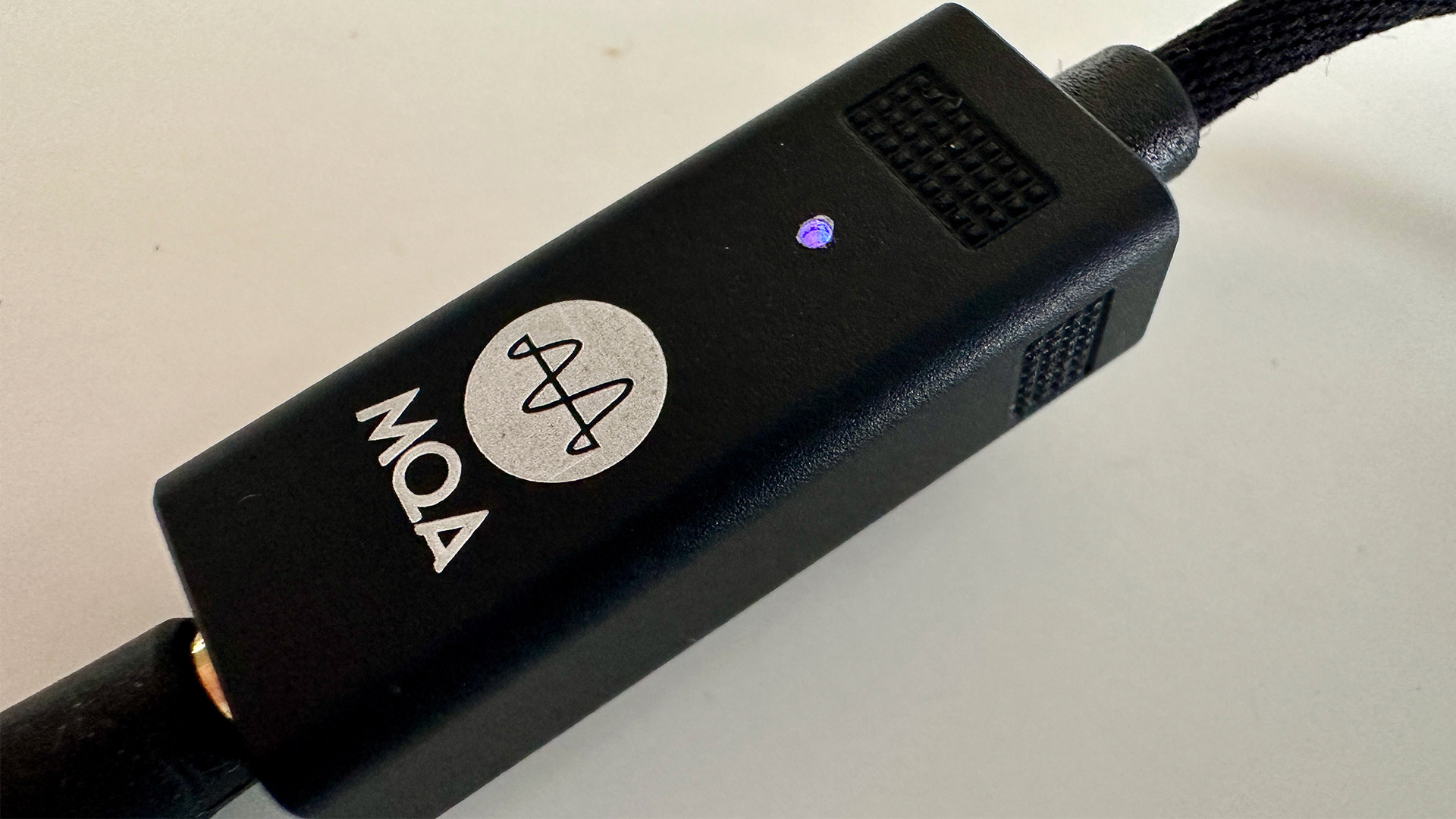
- USB-C and 3.5mm connections
- 384kHz PCM, DSD256 and MQA compatibility
- Three-stage display
Helm Audio is coy about the details of the DAC chipset that’s inside the Bolt, but what’s for sure is that it’s able to deal with PCM files up to 32bit/384kHz resolution and DSD256. It’s also an MQA renderer, so TIDAL users in particular should be able to exploit their subscription fee (yes, there is still plenty of MQA content available on Tidal).
To call it an ‘interface’ is to glorify it somewhat, but the single LED on the metal block lights up in one of three different colours depending on the type of file it’s dealing with. Blue indicates a sample rate of less than 48kHz, red means over 48kHz, and purple indicates MQA content.
Sign up for breaking news, reviews, opinion, top tech deals, and more.
Other than that, there’s really only the little bag the Bolt arrives in and a tidy USB-C / USB-A adapter that count as ‘features’. But to be honest, I’m tempted to ask what more you might realistically expect?
Features score: 4.5 / 5
Helm Audio Bolt review: Sound quality
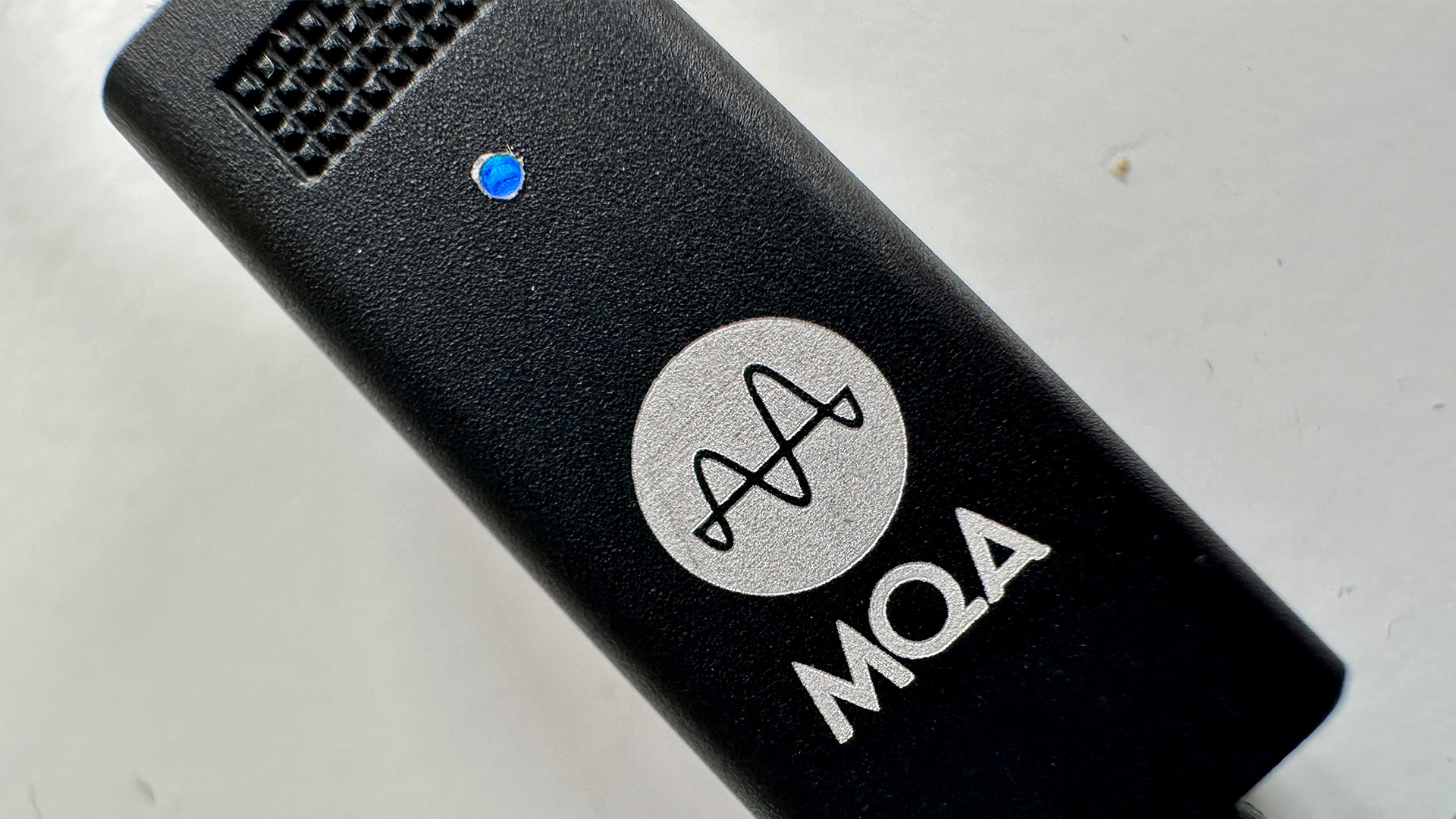
- Detailed and insightful
- Well-supervised punch and attack
- Good separation and focus
If you subscribe to one of the best music streaming services, it’s possible to access a whole lot of high-resolution audio content – and if you have the service’s app on your smartphone, plugging the Helm Audio Bolt into its USB-C socket means you can hear it as fully as possible. And there’s no two ways about it, the sound of the Bolt is as far removed from the unassisted sound of any smartphone you care to mention as three courses at a decent restaurant is from a service-station sandwich.
It’s a rapid and politely attacking listen, the Bolt, with a whole lot of relevant observations to make about tone and texture – even the finest details can’t elude it. A 24bit/192kHz FLAC file of Chic’s I Want Your Love fairly motors along, the much-sampled bass-line delivered with straight-edged control and plenty of momentum. There’s decent brightness to the top of the frequency range, a similar level of attack and just as much detail revealed and contextualised. And in the midrange the Bolt communicates in generous fashion - the vocalists get more than enough room to express themselves, even when the strings and horns attempt to muscle their way to the front of the stage.
The frequency range is nicely integrated, and rhythmic expression is confident too. It’s not the last word in dynamic headroom, to be absolutely honest, but that’s more of an observation than a criticism. What’s important is that the Bolt retains everything that’s fun and energising about the recording, rather than neutering it in the long-established smartphone manner. It can sound a little hard and relentless if you really decide to wind the volume up, sure – but did no one ever tell you not to listen so loud?
Sound quality score: 4.5 / 5
Helm Audio Bolt review: Design

- Mechanical isolation of USB-C from decoding hardware
- Flexible braided cable
- Mostly made of plastic and aluminium
If ever a product was ‘just enough essential parts’, the Helm Audio Bolt is it. At one end there’s a USB-C connection in a little plastic housing, and it’s connected via a short length of braided cable to a slightly larger metal block that contains all the necessary decoding and amplification hardware. This block has its single LED to let you know the broad state of play, and a 3.5mm analogue headphone output. It’s all very neatly put together and tidily finished.
Design score: 5 /5
Helm Audio Bolt review: Usability and setup
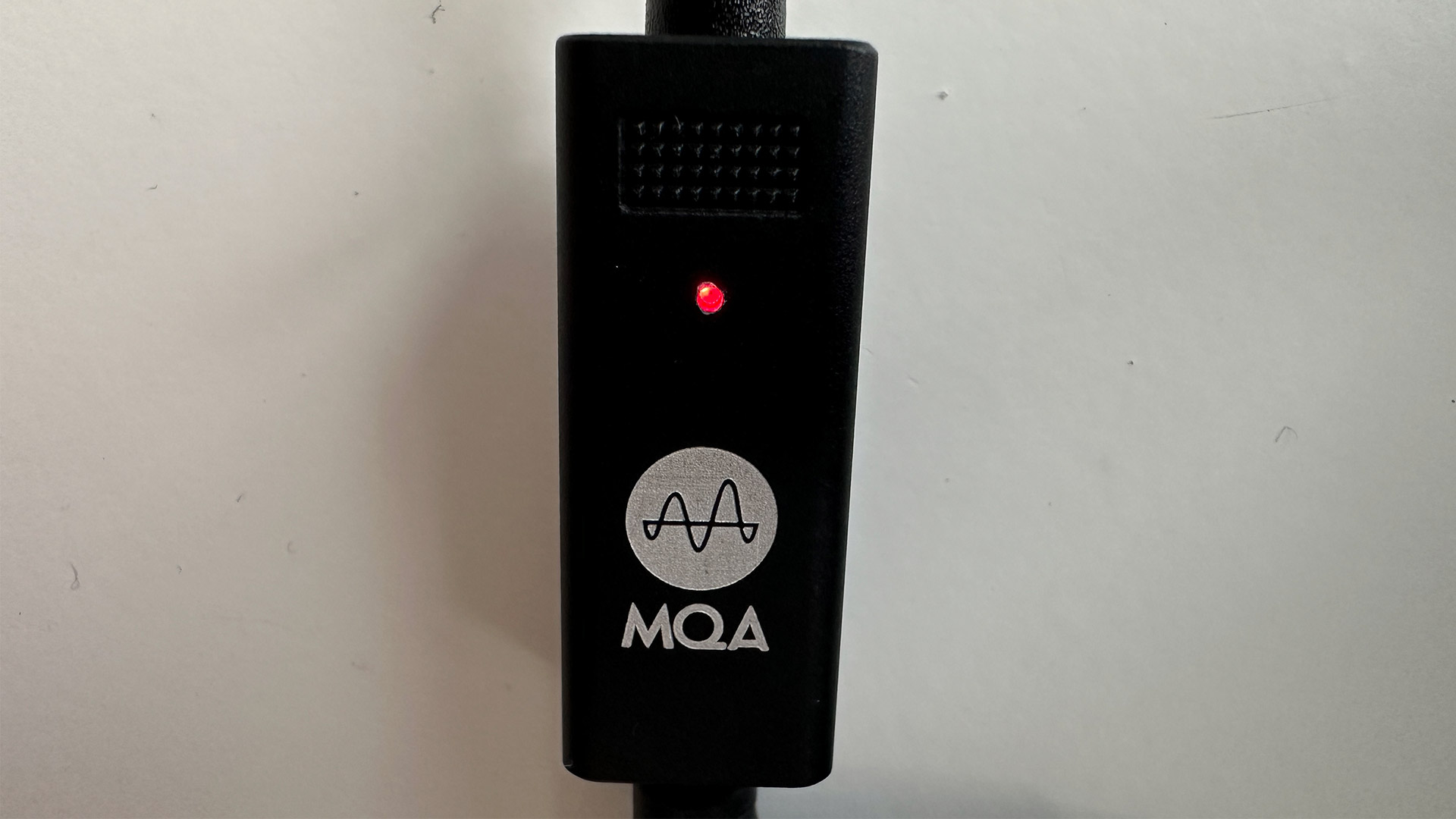
- Pug one end into your smartphone or laptop,
- Plug some headphones into the other end, and
- That’s all that’s required
I’m not the sort of person to talk down to anyone, but if you can’t set up the Helm Audio Bolt in seconds flat, I’m not sure you should be allowed anywhere near electrical equipment. The process is – and I have first-hand evidence of this – so simple, a six-year-old can do it.
Plug the USB-C connection into the USB-C output of the smartphone or laptop you want to listen to. Plug some headphones into the 3.5mm analogue output. Put the headphones on your head and press ‘play’ on your music player. That’s job very much done.
Usability and setup score: 5 / 5
Helm Audio Bolt review: Value
- Affordable compared to competitors
- Offers great value
You can look at the Helm Audio Bolt one of two ways. The first view states that you’re spending more than $100/ £100 / AU$100 on a very small quantity of aluminium, and even smaller quantity of plastic, and a short length of cable joining them together.
The second states that your money is buying profoundly significant improvements to the sound quality you enjoy from your wired headphones while you’re out and about. I know which view I take, and that’s why I reckon the Bolt represents very decent value indeed.
Value score: 5 / 5
Should you buy the Helm Audio Bolt?
Buy it if...
You own some capable wired headphones
The Bolt will exploit their talents far more readily than your smartphone or laptop alone.
You pay for a top-tier music streaming service
The highest of hi-res audio files can be happily dealt with.
You value discretion
It’s hard to know how the Bolt could be any smaller or less intrusive.
Don't buy it if...
Your smartphone doesn’t have a USB-C socket
Not unless you want to pay for an adapter, anyway.
You use a streaming service’s free tier
The Bolt’s talents will not be all that apparent.
You equate ‘quality’ with ‘quantity’
There’s not much stuff here for your money.
Helm Audio Bolt review: Also consider

iFi Uno
The iFi Uno is even more affordable than the Helm Audio Bolt, and is just as enjoyable and convincing a listen in its own way – but while it’s pretty small in absolute terms, it’s quite a bit bigger than the Bolt.

Audioquest Dragonfly Black
The Audioquest Dragonfly Black is a fine and affordable alternative, too, and it’s closer in size to the Bolt. It only has a USB-A connection, though, so will need an adapter to work with your smartphone.
How I tested the Helm Audio Bolt
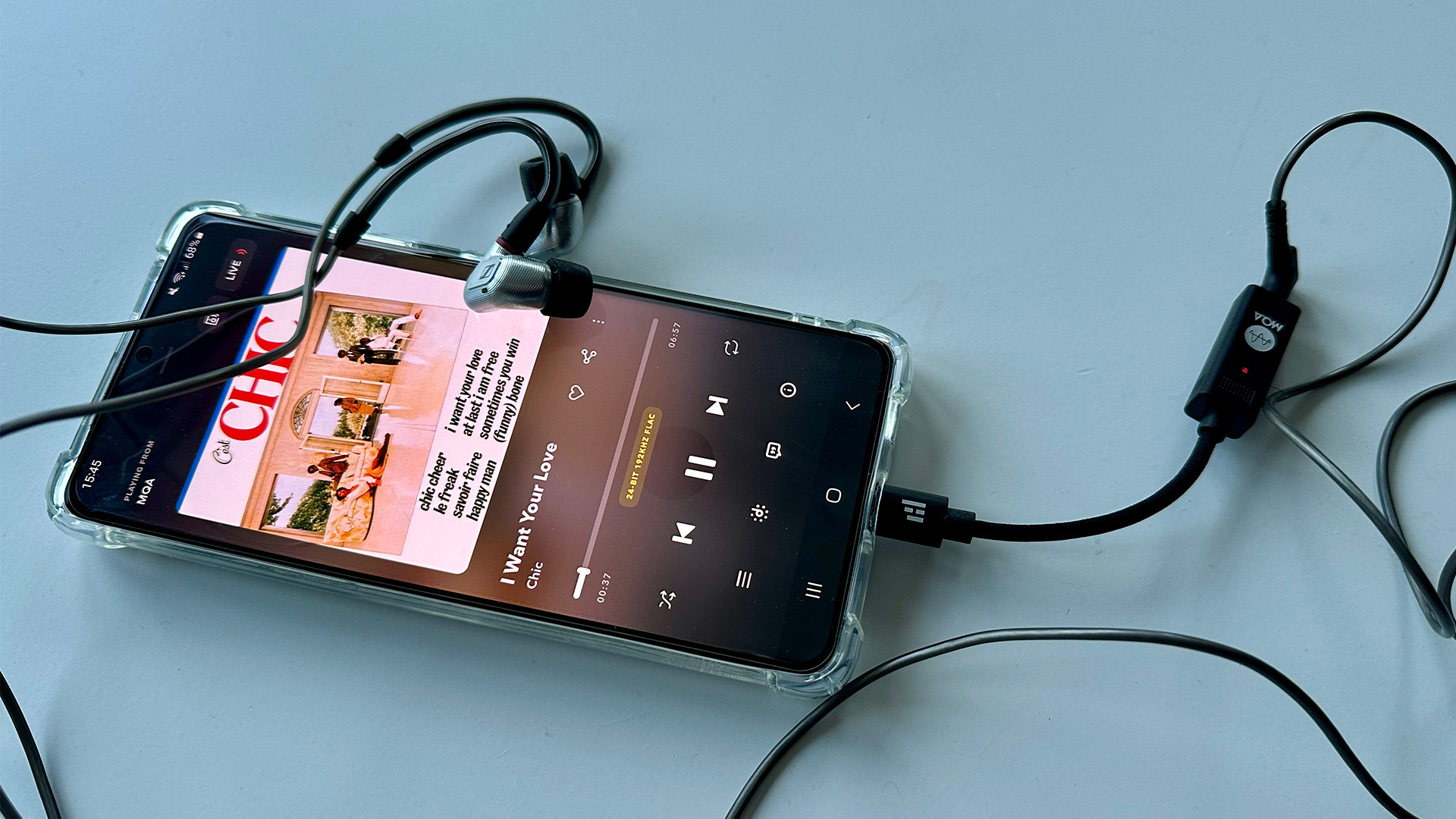
- Used for over a week
- Connected to an Apple MacBook Pro and a Samsung S21 Ultra smartphone
- Wired to Sennheiser IE900 and Campfire Andromeda headphones
The more responsibilities your source of music has, the less effective a source of music it is - I don’t naked the rules, it’s just the truth. So when unplugging headphones as capable as these from the headphone socket of the laptop and listening again via the Bolt, the differences in quality are almost comical. And even the best wireless headphones struggle to match the performance of good wired headphones when the Bolt is plugged into a headphone socket-less smartphone’s USB-C connection…
First reviewed in December 2023

Simon Lucas is a senior editorial professional with deep experience of print/digital publishing and the consumer electronics landscape. Based in Brighton, Simon worked at TechRadar's sister site What HiFi? for a number of years, as both a features editor and a digital editor, before embarking on a career in freelance consultancy, content creation, and journalism for some of the biggest brands and publications in the world.
With enormous expertise in all things home entertainment, Simon reviews everything from turntables to soundbars for TechRadar, and also likes to dip his toes into longform features and buying guides. His bylines include GQ, The Guardian, Hi-Fi+, Metro, The Observer, Pocket Lint, Shortlist, Stuff T3, Tom's Guide, Trusted Reviews, and more.
